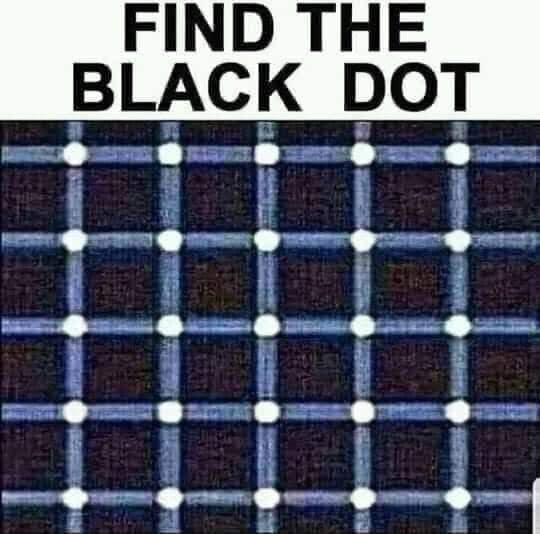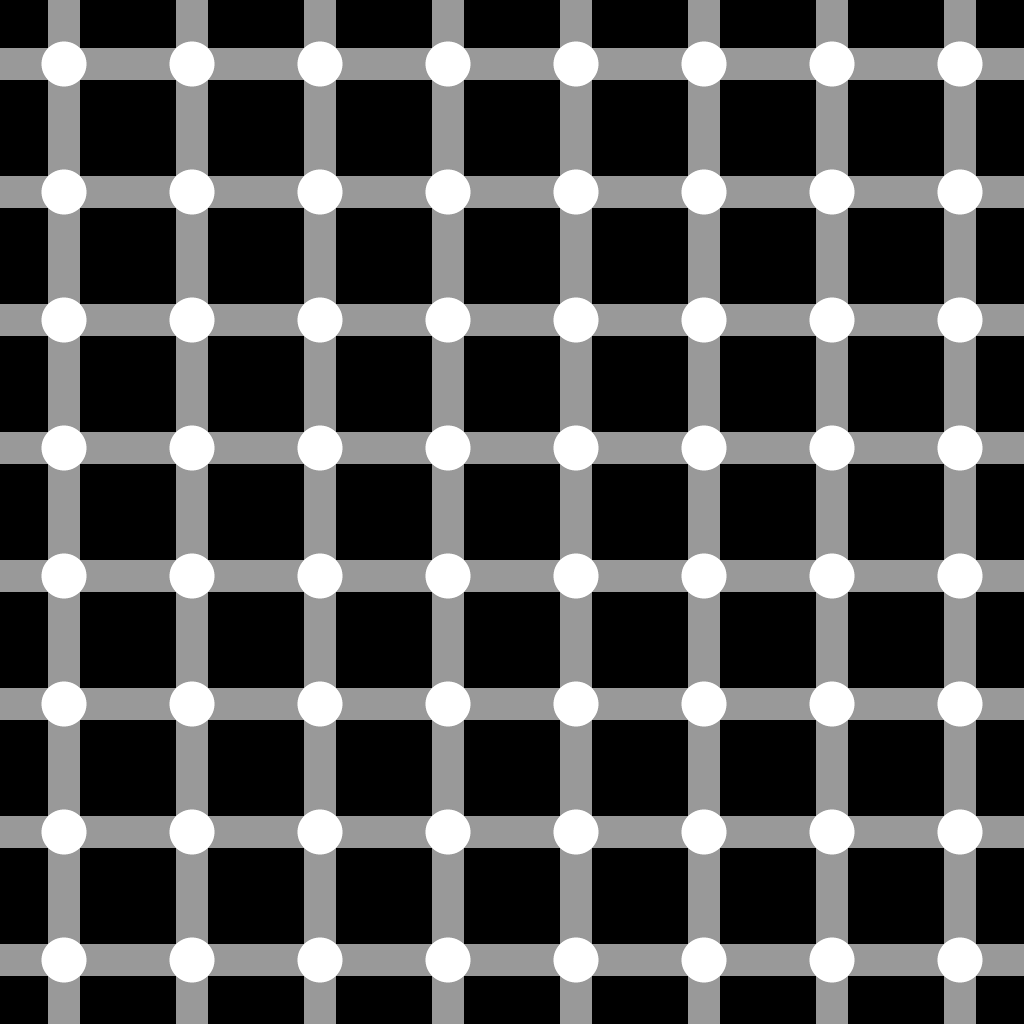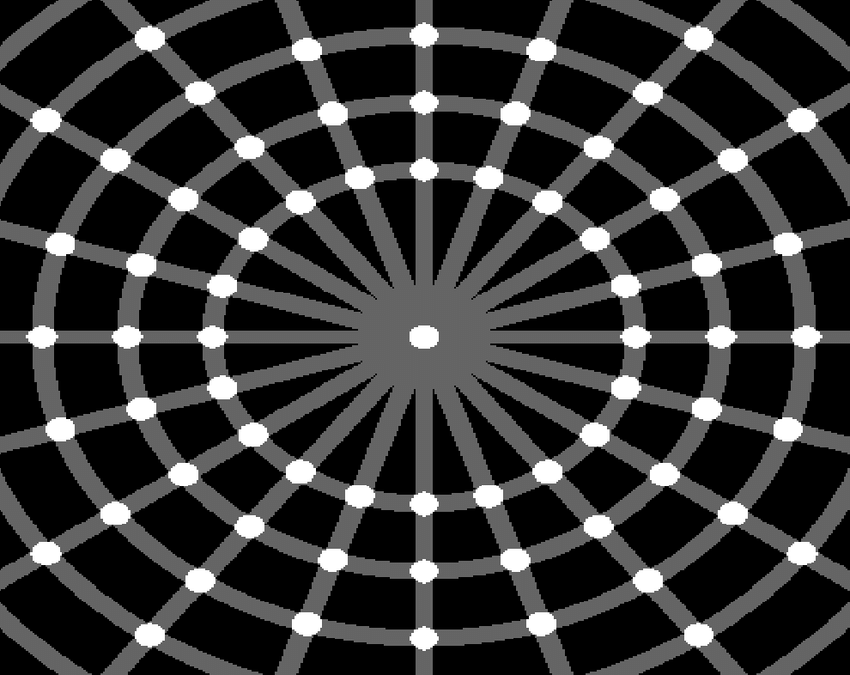Ever stared at an image and wondered if your eyes were playing tricks on you? Well, you’re definitely not alone. One of the most mind-bending optical illusions is called the Scintillating Grid Illusion, sometimes known as the “Grid Illusion.” At first glance, you’ll notice black dots flickering at the intersections of white lines against a dark background. But here’s the kicker: those dots aren’t really there at all.
So, what’s happening here? Let’s dive in to explore how your brain gets fooled by something so simple yet so mysterious.

The Mind-Blowing Reality: No Black Dots Exist!
You might find this hard to believe, but take a closer look. Try focusing directly on one intersection. What happens to the other intersections around it? Those pesky black dots vanish the moment you try to stare them down. Strange, isn’t it?
In reality, every single dot at these intersections is pure white. Yep, you heard that right—no black dots at all! Those fleeting black dots you see dancing around are purely a product of your brain’s interpretation of light and contrast. Your vision system isn’t glitching exactly, but it is making some curious shortcuts in processing visual information.
Video: Processing Visual Stimuli, Hermann Grid, Contra lateral processing IB Biology
Why Your Brain Sees Phantom Black Dots
Let’s unravel this puzzle a bit more. Your eyes aren’t digital cameras capturing precise images. Instead, they work closely with your brain, continually processing tons of visual data to form coherent images.
When you fixate on a single white dot, the peripheral vision—areas you’re not directly looking at—struggles to distinguish clearly between the bright white lines and the dark background. Essentially, your eyes send confusing signals back to your brain, which interprets this confusion as flickering black dots.
Think of it like watching shadows move at the edge of your vision. You think you see movement, but when you look directly, there’s nothing. Similarly, the Scintillating Grid Illusion creates a flickering effect because your peripheral vision has trouble handling sharp contrasts.
How Your Vision and Brain Create Illusions Together
Vision isn’t simply about seeing; it’s about interpreting. The brain receives visual input and tries to make sense of it quickly. In this rapid-fire interpretation, errors can occur. The grid illusion showcases how these processing shortcuts can trick us.
Here’s a metaphor: Imagine your brain as a busy traffic cop handling a bustling intersection. When too many cars (visual signals) rush in simultaneously, your brain gets overwhelmed and simplifies details. It sees patterns that aren’t there, such as phantom black dots. This is your visual cortex “filling in” missing information or misinterpreting contrasts, creating illusions out of nothing.
A Deeper Dive into Peripheral Vision’s Role

Peripheral vision is notorious for its inaccuracy. The retina—the sensitive lining at the back of your eyes—has specialized cells called rods and cones. Cones are great at detecting details and colors, but they’re mostly concentrated at the center of your vision. Rods, which detect shapes and contrasts, dominate peripheral vision. But rods aren’t particularly good at differentiating subtle contrasts.
So, when bright white lines intersect sharply against dark backgrounds, your peripheral rods can’t clearly interpret the scene. Your brain compensates for this by briefly “filling in” the ambiguous spaces, creating flickering black dots that disappear as soon as you directly focus on them.
Can You Train Your Brain to Ignore the Illusion?
You might wonder, “If it’s all in my brain, can I train myself not to see it?” Unfortunately, it’s not that simple. Optical illusions like the Scintillating Grid rely on deeply rooted visual processes. While you can become aware of the trick your mind is playing, you can’t entirely eliminate it.
However, knowing the reason behind the illusion can help you appreciate how sophisticated—and sometimes flawed—your visual perception can be.
The Real-Life Implications of Optical Illusions

Beyond being fun curiosities to share with friends, optical illusions like this one help scientists understand how vision and the brain function together. Researchers study these phenomena to discover how we interpret reality and how our brains process sensory information.
For example, knowing about peripheral vision’s limitations helps improve visual safety features in cars, enhance image clarity in displays, or assist in the design of safer pedestrian crossings. Illusions like the Scintillating Grid aren’t just entertaining—they’re practical tools that inform design, safety, and human interaction with technology.
Final Thoughts: Seeing Isn’t Always Believing
At the end of the day, the Scintillating Grid Illusion teaches a valuable lesson: Seeing isn’t always believing. Our brains aren’t infallible machines perfectly interpreting reality. Instead, they’re brilliant yet occasionally flawed systems, filling in gaps, correcting perceived errors, and sometimes creating illusions from thin air.
Understanding illusions isn’t just about enjoying fun visual tricks; it’s about appreciating the incredibly complex interplay between our eyes and our brains. Next time you see those dancing black dots, smile and appreciate the fascinating quirks of your own perception.
So, go ahead, share this astonishing illusion with friends and watch as their minds get equally blown. After all, who doesn’t enjoy a good visual mystery that makes you question the very nature of reality itself?


